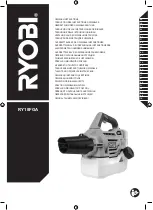
14
00 0290 395 0 - RHB C 490-C 370 - 03/09
1 Introduction
General repair instructions
44966
14037
Ferrule fittings on hydraulic lines
When pre-assembling the unit and for pre-assembled
factory-delivered ferrule fittings, the following applies:
installation is in the associated, well-oiled threaded
joint with half a turn of the union nut beyond the point
where resistance is felt.
Pre-assembly:
– Cut off the tube at right angles.
Do not use a pipe cutter! This will slant the tube
wall, causing heavy inside and outside burrs.
– Slightly deburr the inside and outside tube ends.
Do not chamfer!
– Clean the tube end.
In case of tube bends, the straight tube end up to
where the bending radius starts must be at least twice
the height of the union nut.
– Push the union nut and the ferrule on the tube.
– Push the tube against the stop in the union and
tighten the union nut until the ferrule catches the
tube.
The tube must not rotate. This point can be felt
because increased power is needed from here.
– Tighten the union nut half a turn beyond the point
where resistance is felt.
– Check the cut produced by the cutting edge.
A visible collar must fill up the space ahead of the
ferrule face. The ferrule may rotate, but axial dis-
placement must not be possible.
Final assembly
– Insert the pre-assembled tube into the well-oiled
screw fitting.
– Tighten the union nut until considerably more
force is needed.
– Then add another half a turn.
Repeated assembly
– Every time the ferrule fitting has been loosened,
retighten the union nut without using increased
force.
Ferrule fitting leaks
– If a fitting leaks, first loosen the union nut until
some oil escapes.
– Then tighten the union nut as specified.
14039
Progressive ring fittings on hydraulic lines
When pre-assembling the unit and for pre-assembled
factory-delivered profiled ring fittings, the following
applies: installation is in the associated, well-oiled
threaded joint with half a turn of the union nut beyond
the point where resistance is clearly felt.







































